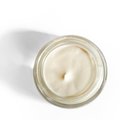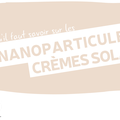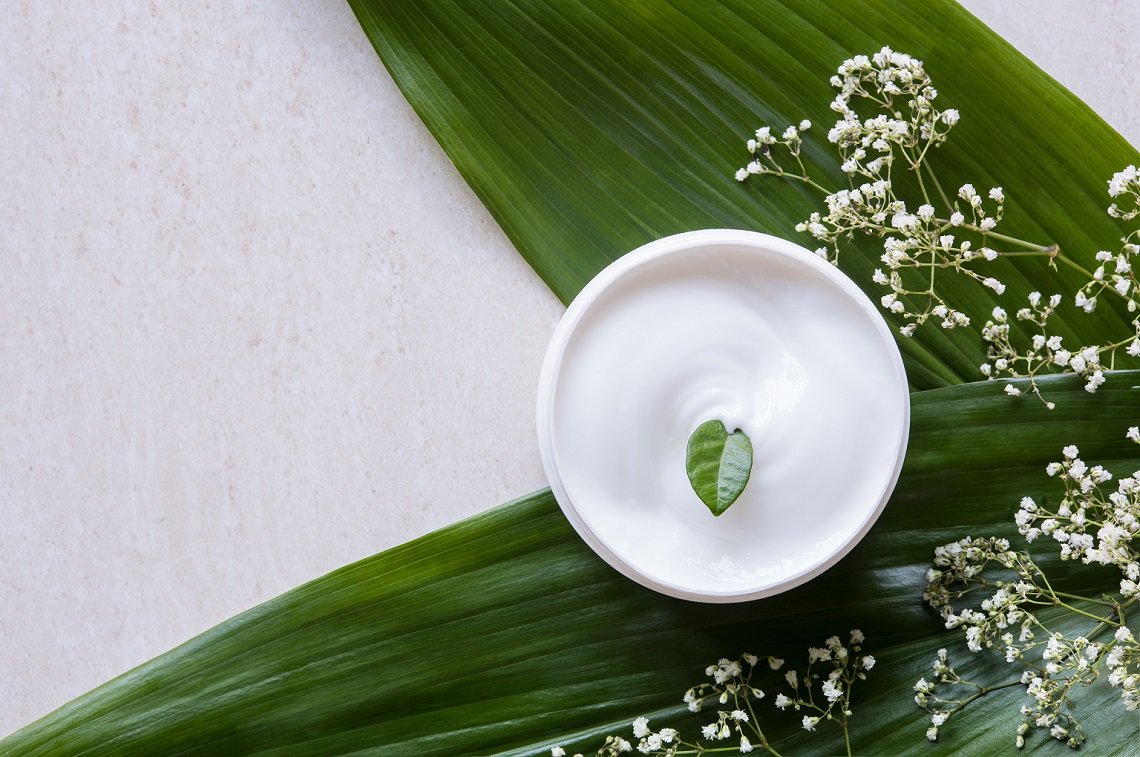
Today, the beauty aisle is full of products and it’s not always easy to tell the difference between which cosmetic is natural and which is organic. In this article, we will study what differentiates these two types of products and also help you distinguish them from conventional cosmetics!
What is a Natural Cosmetic?
In this section of the article, we will give the definition of natural cosmetics and show you how to differentiate them from classic cosmetics.
The Definition of Natural Cosmetics
In general, a natural cosmetic is a cosmetic that contains at least 95% natural ingredients. Here at Cosmébio, we go even further. Not only does the label require that this percentage be met, but there are also restrictions put in place for what is allowed to compose the last 5%. Numerous ingredients such as silicones and PEGs are prohibited. The Cosmébio label also takes into account the manufacturing, which must produce low environmental stress and create little pollution.
Don't be fooled by products imposing as natural!
With the current climate of greenwashing, it’s not always easy to recognize what products are truly natural. We see quite often certain cosmetics claiming to have more than 95% natural ingredients, yet they still contain silicones, BHT, phenoxethanol…ingredients that the consumer no longer wishes to see in their cosmetics!
In order to be certain about what you’re buying, we recommend looking for the COSMOS NATURAL label. This label guarantees that the cosmetic has been analyzed and is conform to the previous definition. Furthermore, you can check the back of your cosmetic packaging and see the percentage of ingredients with naturel origins included in the product.

What is an Organic Cosmetic?
With even more exigence required than with natural cosmetics, organic cosmetics are certified based on the ingredients originating from organic farming.
The Definition of Organic Cosmetics
An organic cosmetic is a natural cosmetic (cf. the definition at the beginning of this article), that also must contain a certain percentage of ingredients originating from organic farming. In this case, at least 95% of ingredients capable of being organic must be.
To recognize an organic cosmetic, just look for the green oval Cosmébio label. Sometimes this label is followed by the COSMOS ORGANIC signature. This depends on which standard was used because in 2017 our association began only employing the COSMOS standard for all new organic products put on the market with our label. You can read more about the difference in labels here.
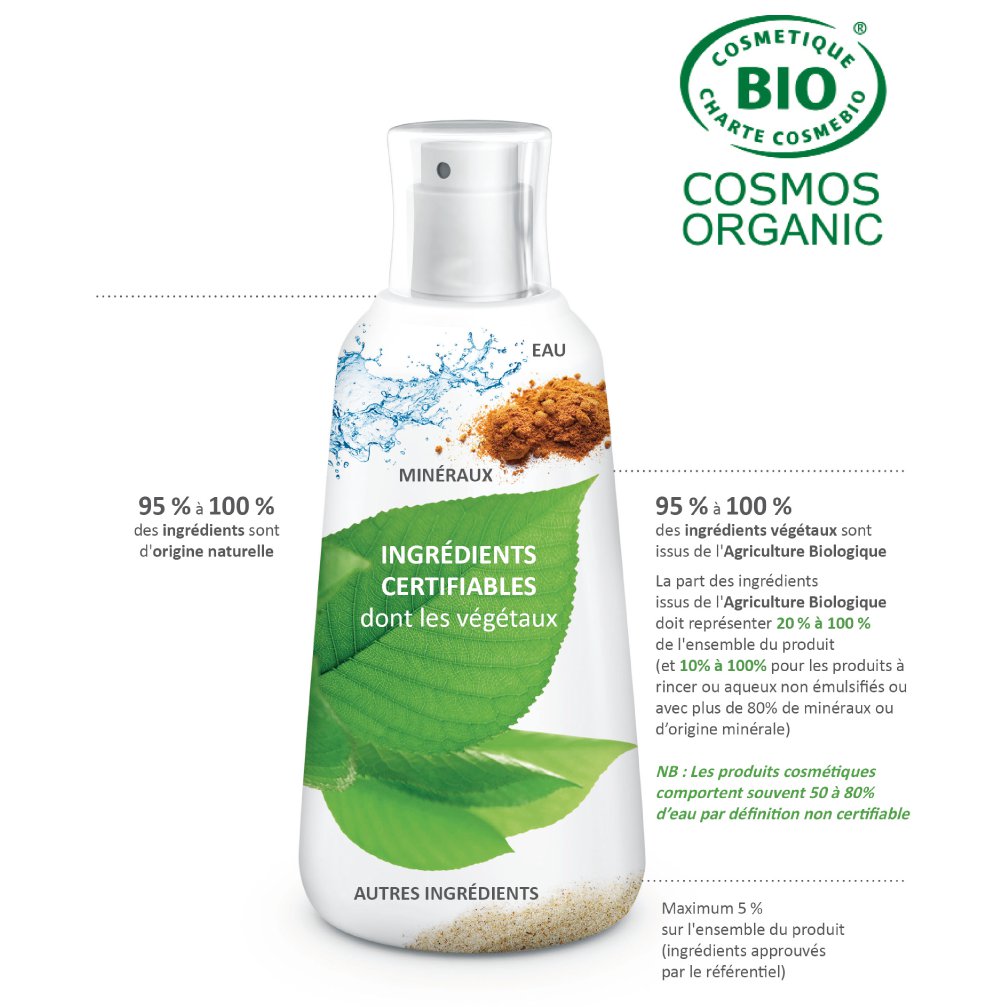
Water and Minerals are certainly natural, but they cannot be organic.
Present in a majority of cosmetics, water cannot be considered organic because it cannot be cultivated, unlike other ingredients, such as plant extracts. The same goes for minerals, such as clay for example, these ingredients are directly collected from the earth.
In order to have the utmost transparency on what is truly in your cosmetics, there is a 2nd percentage indicated on the products. This percentage is the amount of organic ingredients compared to the totality of the product. This percentage has a 20% minimum (10% for rinsable products, like shower gels or cosmetics with a higher percentage of minerals).
What's the difference between organic cosmetics and conventional cosmetics?
The difference between an organic cosmetic and a classic cosmetic lays largely within their composition. When making general comparisons, the two may seem similar. It’s upon further inspection in their ingredients that we see the two are very different. Here are some examples to help illustrate more clearly their differences:
- In the aqueous phase, conventional cosmetics use simple water. However, an organic cosmetic will more often use hydrosols (flower water) in order to give added benefits to the final product.
- Fragrances added to conventional cosmetics is often artificial, whereas organic cosmetics use natural fragrances (essential oils, etc)
- With conventional cosmetics, the allowed ingredients are controlled by the European standard n°1223/2009. In this standard, there are controversial ingredients included but organic cosmetics formulate their products taking into consideration black listed ingredients.
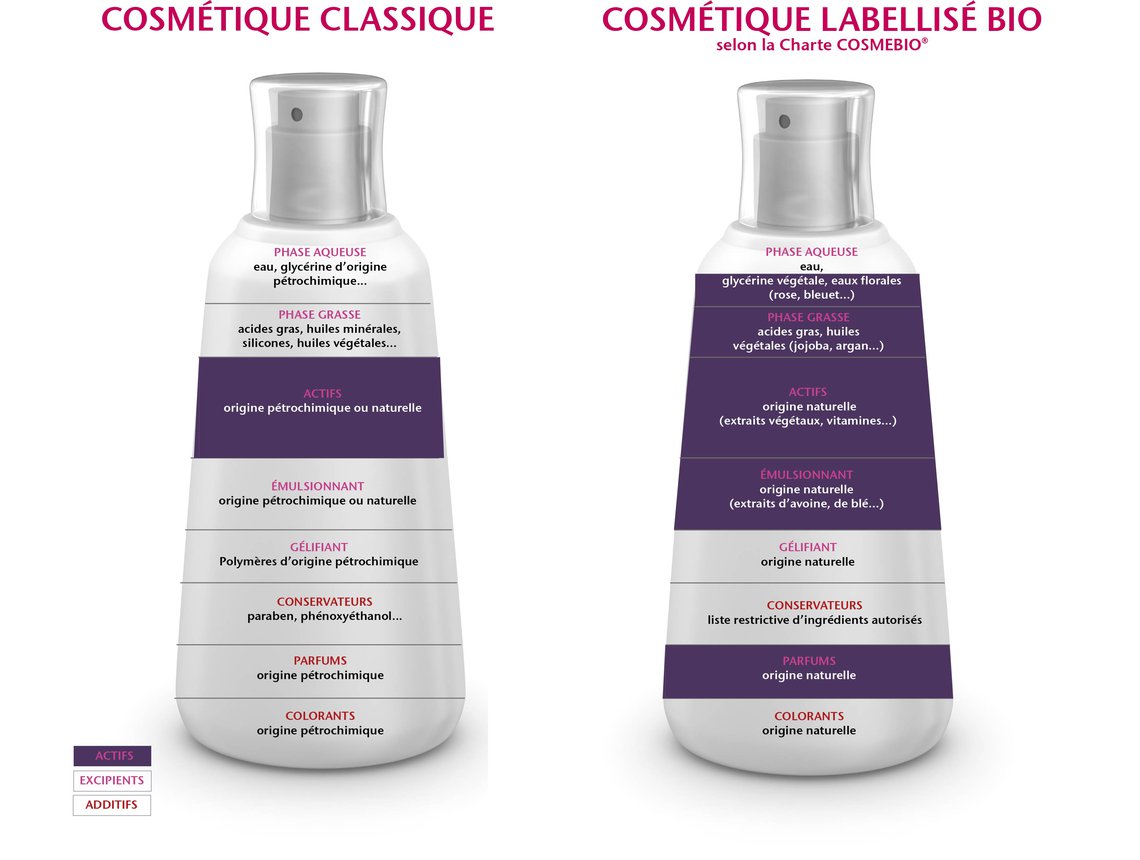
Furthermore, conventional cosmetics aren’t always concerned with their environmental impact. They tend to use manufacturing methods that are highly pollutant and not very considerate of the people employed for their fabrication.

